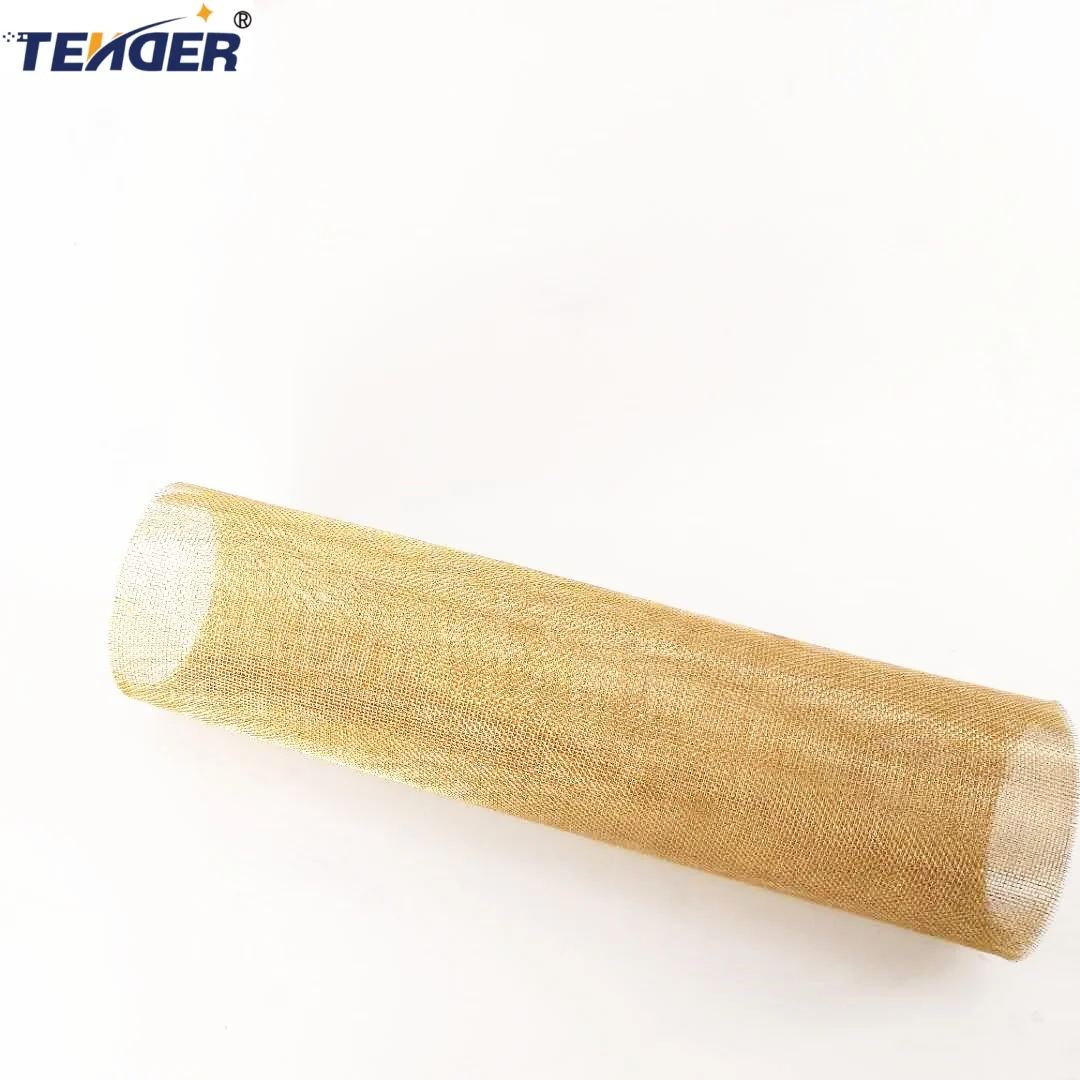If you work around screening lines or filtration skids, you’ve probably handled brass woven wire mesh more times than you can count. And for good reason: it’s that sweet spot of conductivity, corrosion tolerance, and formability that keeps engineers (and maintenance crews) happy. To be honest, stainless steals the spotlight online, but in papermaking rooms, labs, and decorative installs, brass quietly does the heavy lifting.

What’s trending (and what’s real)
Two trends stand out: tighter tolerances for micronic filtration and prettier finishes for architectural screens. In fact, designers ask for “woven brass mesh” finishes more often than I expected five years ago. Meanwhile, plant managers are standardizing on ISO/ASTM test methods so different vendors’ cloths can be swapped with minimal drama.
Quick specs that actually matter
|
Parameter |
Typical Value |
Notes |
|
Alloy |
Cu-Zn ≈65/35 (C26800 “Yellow Brass”) |
Warp for papermaking may use phosphor bronze (ASTM B159) |
|
Mesh counts |
4–200 mesh |
Micronic cloth available on request |
|
Wire diameter |
0.03–1.0 mm |
Open area ≈20–70% (real-world use may vary) |
|
Tensile strength |
≈400–600 MPa |
Depends on wire temper and weave |
|
Conductivity |
≈28% IACS |
Handy for static-dissipative screens |
|
Standards |
ASTM E2016/E2016M; ISO 9044 |
Dimensional and visual tolerances |
How it’s made (and tested)
Materials: brass wire (C26800) for weft; phosphor bronze wire for warp in papermaking cloth. Methods: precision drawing, annealing, and shuttle/rapier looms for plain or twill weave. Post-processing: leveling, degreasing, slitting, and edge binding.
QA/testing: mesh count and aperture per ASTM E2016; wire dia micrometry; burr/flatness inspection; conductivity checks; 5% NaCl fog per ASTM B117, 96 h—no perforation, only surface tarnish; tensile sampling on strips. Typical service life: 3–5 years in neutral-process filtration; 12–24 months in warm alkaline or acidic washes (I’ve seen outliers last longer with gentle cleaning).
Where it’s used
· Papermaking cloth: warp phosphor bronze + weft brass woven wire mesh for formation and drainage.
· Process filtration: resins, solvents, screening of abrasive media.
· EMI-safe panels and spark-resistant sieving (yep, that conductivity helps).
· Decorative panels, signage, and furniture—“woven brass mesh” finishes sell fast.
Feedback from buyers? Many customers say it bends without cracking, holds aperture accuracy, and—surprisingly—cleans up well with mild citric baths.
Mini case study
A mid-size paper mill in Guangdong swapped 80-mesh formation screens to a phosphor-bronze/brass hybrid. Result: 6% fewer sheet breaks and smoother dewatering in the first 90 days. Maintenance noted lower edge fray after switching to twill weave brass woven wire mesh.
Who to buy from (frankly compared)
|
Vendor |
Strengths |
Watch-outs |
|
Woven-Filtermesh |
Tight tolerances; papermaking cloth expertise; custom cuts |
Lead-time spikes during peak seasons |
|
General Trader A |
Aggressive pricing; broad inventory |
Documentation can be thin; aperture deviations ≈+/-5% |
|
Specialist Mill B |
High-end micronic cloth; cleanroom packing |
MOQ and premium pricing |
Customization and compliance
Options: plain/twill weave, edge binding, panel framing, passivation or clear lacquer for décor, slit rolls down to 20 mm. Certifications available: RoHS, REACH, and material certs with heat numbers. Dimensional audits per ISO 9044; cloth inspection per ASTM E2016. For papermaking warp, phosphor bronze wire per ASTM B159. Nice-to-have: salt-fog test reports and conductivity checks when EMI is on the spec.
Bottom line: if you need robust, formable screens that carry current and resist many process chemicals, brass woven wire mesh is still a smart, pragmatic choice.
References
1. ASTM E2016/E2016M – Standard Specification for Industrial Woven Wire Cloth.
2. ISO 9044:2016 – Industrial Woven Wire Cloth – Technical requirements and tests.
3. ASTM B117 – Standard Practice for Operating Salt Spray (Fog) Apparatus.
4. ASTM B159 – Standard Specification for Phosphor Bronze Wire.
5. ASTM B36/B36M – Standard Specification for Brass Plate, Sheet, Strip, and Rolled Bar (alloy reference for C26800).
Anping Tengde Metal Wire Mesh Products Co., Ltd. Has been dedicated to the production and research and development of wire mesh products for 30 years. Leading Vibrating Screen It is a comprehensive department integrating production and processing, distribution and wholesale. Stainless steel mesh series, wire mesh products series, and filter elements and filter materials. Wire MeshWe can also produce various special-shaped net types and deep-processed net products according to customer needs and requirements. wire mesh suppliers All our products leaving the factory have undergone strict inspection to ensure that they are 100% qualified. Filtration Screens ManufacturerThe company adheres to the business philosophy of “technology leadership and quality victory”, and has nearly a hundred MID-to-senior level professional and technical personnel. wire mesh manufacturer We have maintained long-term and good cooperative relations with large domestic oil fields, coal mines, petroleum, machinery, chemical and other units, and have established good trade relations with more than 70 countries including the United States, Japan, Russia and Australia. Anping Tengde Metal Wire Mesh Products Co., Ltd.wire mesh screens suppliers Will continue to adhere to the tenet of “customer first, integrity-based”, and with the spirit of continuous innovation and win-win cooperation, forge ahead and challenge the future.wire mesh filter manufacturers|mesh wire suppliers